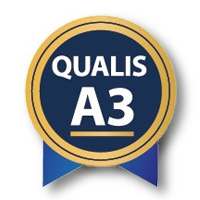The 2008 Agreement Between the Holy See and Brazil on the Juridical Statute of the Catholic Church in Brazil in the Eyes of the Brazilian Superior Courts
DOI:
https://doi.org/10.19135/revista.consinter.00013.21Palavras-chave:
Direito internacional, Brasil, Santa Sé, Estatuto Legal, Igreja Católica, instrução confessional, nulidade do casamentoResumo
In 2008, Brazil and the Holy See entered into an Agreement on the Juridical Statute of the Catholic Church and its Ecclesiastical Institutions in Brazil (the “Agreement”). The Agreement was approved by the Brazilian Congress by Legislative Decree 698 on October 7, 2009 and entered into force in the international sphere on December 10, 2009. On February 11, 2010, by Presidential Decree 7.107, it entered into force in the domestic sphere. The purpose of this essay is assessing the consistency of the Agreement with the State laicity enshrined in the 1988 Brazilian Constitution. The hypothesis is the validity of the Agreement due to the special status of the Holy See in International Law. The methodology of study consisted in describing the historical background of the relationship between State and Church in Brazil as a preamble for surveying cases which have dealt with the 2008 Agreement and the corresponding decisions at the Brazilian Superior Courts. As a result, we have found out that the Brazilian Judiciary sustained the compatibility of the Agreement with the laicity of the Brazilian State enshrined in its 1988 Constitution in two leading cases that addressed, respectively, the possibility of confirmation, by Brazilian Courts, of ecclesiastical declarations of nullity issued by marriage tribunals under the Code of Cannon Law, and the possibility of confessional classes in public schools. Both possibilities were eventually upheld by Brazilian Superior Courts in landmark rulings on the status of the Holy See in the Brazilian practice of international law.
Downloads
Referências
BRAZIL, Federal Supreme Court. Case ADI 4439. Decided on Sept 27, 2017. Copy of the decision and of the whole case file available (in Portuguese) at <http://portal.stf.jus.br/>.
BRAZIL, Superior Tribunal of Justice. Case SEC 11.962. Decided on Nov. 4, 2015. Copy of the decision available (in Portuguese) at <http://www.stj.jus.br/sites/STJ>.
EUROPEAN UNION, European Court of Human Rights. Case Folgero and others v. Norway (application 15472/02). Decided on June 29, 2007. Copy of the decision available (in English) at <http://hudoc.echr.coe.int/eng?i=001-81356>.
EUROPEAN UNION, European Court of Human Rights. Case Hasan and Eylem Zengin v. Turkey (application 1448/04). Decided on January 9, 2008. Copy of the decision available (in English) at <http://hudoc.echr.coe.int/eng?i=001-82580>.
GERMANY, Federal Constitutional Court. Case 1 BvR 387/65. Decided on Oct. 19, 1971. Copy of the decision available (in German) at <https://openjur.de/u/175380.html>.
PORTUGAL, Constitutional Tribunal. Court Decision 423/87. Decided on Oct 27, 1987. Copy of the decision available (in Portuguese) at <http://www.tribunalconstitucional.pt/tc/acordaos/19870423.html>.
UNITED STATES, Supreme Court. Case West Virginia State Board of Education v. Barnette (No. 591). Decided on June 14, 1943. Copy of the decision available (in English) at <https://www.law.cornell.edu/supremecourt/text/319/624>.
GOUVEIA, J.B. Manual de Direito Internacional Público. Rio de Janeiro, Renovar, 2005.
MAZZUOLI, V. Curso de Direito Internacional Público. São Paulo, Revista dos Tribunais, 2008.
TIBURCIO, C., “Private International Law in Brazil: a brief overview”, Panorama of Brazilian Law, Vol 1, No 1, (2013), pages 11-37. DOI: https://doi.org/10.17768/pbl.a1.n1.p11
Downloads
Publicado
Como Citar
Edição
Seção
Licença
Copyright (c) 2021 Eduardo Szazi

Este trabalho está licenciado sob uma licença Creative Commons Attribution-NonCommercial-ShareAlike 4.0 International License.
Para fins da universalização e compartilhamento livre dos saberes a Revista do CONSINTER está indexada sob a Licença Creative Commons 4.0
Atribuição – Uso Não Comercial – Compartilhamento pela mesma licença 4.0 Brasil.
É permitido:
– Copiar, distribuir, exibir e executar a obra
– Criar obras derivadas
Sob as seguintes condições:
ATRIBUIÇÃO
Você deve dar crédito ao autor original, da forma especificada pelo autor ou licenciante.
USO NÃO COMERCIAL
Você não pode utilizar esta obra com finalidades comerciais.
COMPARTILHAMENTO PELA MESMA LICENÇA
Se você alterar, transformar ou criar outra obra com base nesta, você somente poderá distribuir a obra resultante sob uma licença idêntica a esta.
Para cada novo uso ou distribuição, você deve deixar claro para outro, os termos da licença desta obra.
Licença Jurídica (licença integral): https://creativecommons.org/licenses/by-nc-sa/4.0/deed.pt_BR









